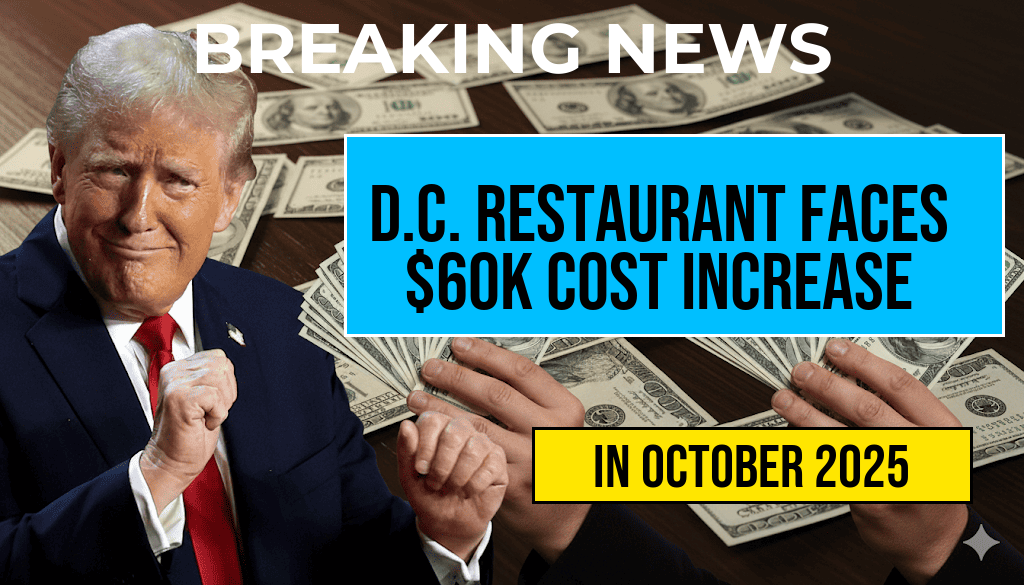Former President Donald Trump’s recent policy change allowing workers in the service industry to deduct a significant portion of their tip income has raised eyebrows and sparked discussions about its potential impact on take-home pay. Under the new guidelines, employees can deduct up to $25,000 from their taxable income, which could translate into an increase of approximately $1,300 in annual take-home pay for many. This policy is particularly relevant for waitstaff, bartenders, and other service-oriented workers who rely heavily on tips. With the ongoing debate over tax reforms and their implications for low- and middle-income earners, this policy might offer financial relief to those most affected by economic fluctuations.
Understanding the ‘No Tax on Tips’ Policy
The ‘No Tax on Tips’ policy was introduced to address the financial challenges faced by service industry workers, who often live paycheck to paycheck. Traditionally, tips are considered taxable income, which has been a source of frustration among employees who feel their earnings should be exempt from taxation. The new policy aligns with Trump’s broader economic strategy aimed at stimulating job growth and increasing disposable income for low-wage earners.
How the Deduction Works
The key aspect of this policy is the allowance for workers to deduct up to $25,000 in tips from their taxable income. To qualify, employees must meet specific criteria:
- Must work in a position where tips are customary.
- Must report their tips accurately to their employer.
- Must provide documentation to substantiate their claim for deductions.
For many workers, this could mean a significant reduction in their taxable income, leading to lower tax liability and potentially a higher refund when filing their taxes. For example, if a worker earns $40,000 annually and deducts the maximum $25,000 in tips, they would only be taxed on $15,000 of their income. This could result in substantial savings.
Potential Impact on Take-Home Pay
The estimated increase in take-home pay of around $1,300 is based on average tax rates and the assumption that workers are able to fully utilize the deduction. This increase could make a noticeable difference for those in the service industry, where wages are often supplemented by tips. According to estimates from the IRS, tip income can significantly contribute to overall earnings, and this policy could enhance financial stability for many households.
Critics and Supporters Weigh In
The policy has garnered both support and criticism. Supporters argue that it acknowledges the unique challenges faced by service workers and helps them retain more of their earnings. Critics, however, express concerns about the potential for abuse, where employees might underreport their actual income to maximize deductions. Additionally, some tax experts caution that without proper oversight, the policy could lead to complications in tax compliance and enforcement.
What Experts Are Saying
Tax professionals and economists are divided on the implications of this policy. Some believe it could incentivize workers to remain in the service industry, while others worry it may complicate tax filing processes. According to a report by the Washington Post, the real impact will depend on how many workers are able to take full advantage of the deduction and how it affects the overall tax landscape.
A Broader Context
This policy falls within a wider narrative of tax reforms aimed at benefiting lower-income workers. As discussions around economic recovery continue, understanding the implications of such policies becomes increasingly important. Workers in various industries are looking for ways to maximize their earnings, and tax deductions like this could play a crucial role in reshaping their financial futures.
| Annual Income | Tips Deducted | Taxable Income | Estimated Tax Savings |
|---|---|---|---|
| $40,000 | $25,000 | $15,000 | $1,300 |
| $50,000 | $25,000 | $25,000 | $1,500 |
As this policy takes effect, its success will depend on the participation of service workers and their ability to navigate the tax system. The potential for a $1,300 increase in take-home pay is enticing, but ensuring compliance and preventing misuse will be critical to its long-term sustainability.
Frequently Asked Questions
What is Trump’s ‘No Tax on Tips’ policy?
Trump’s ‘No Tax on Tips’ policy allows workers in the service industry to deduct up to $25,000 from their taxable income, potentially increasing their take-home pay.
How does this policy affect my take-home pay?
By allowing a deduction of up to $25,000, workers could see an increase of approximately $1,300 in their take-home pay, depending on their tax situation.
Who qualifies for the ‘No Tax on Tips’ deduction?
This policy primarily benefits workers in the service sector, such as waitstaff, bartenders, and other employees who earn tips as part of their income.
Are there any limitations to the deduction?
Yes, the deduction is capped at $25,000, and it is essential for workers to accurately report their tips to qualify for the full benefit.
How do I apply for the ‘No Tax on Tips’ deduction?
To apply for the deduction, workers should report their tip income on their tax returns and ensure they comply with all relevant tax regulations set by the IRS.





